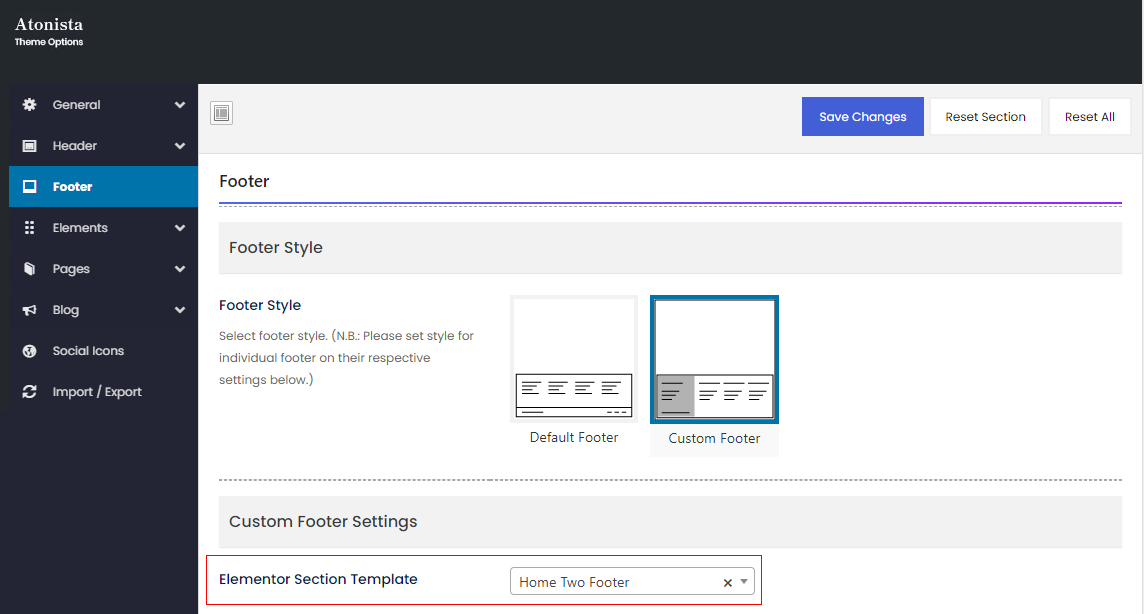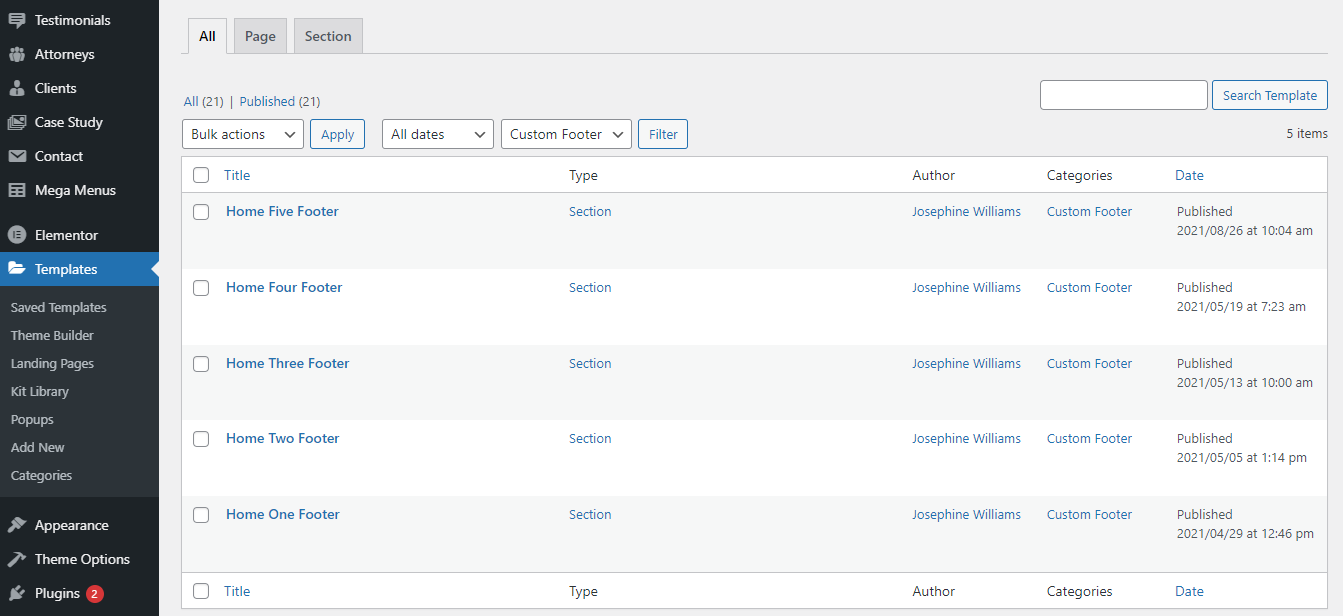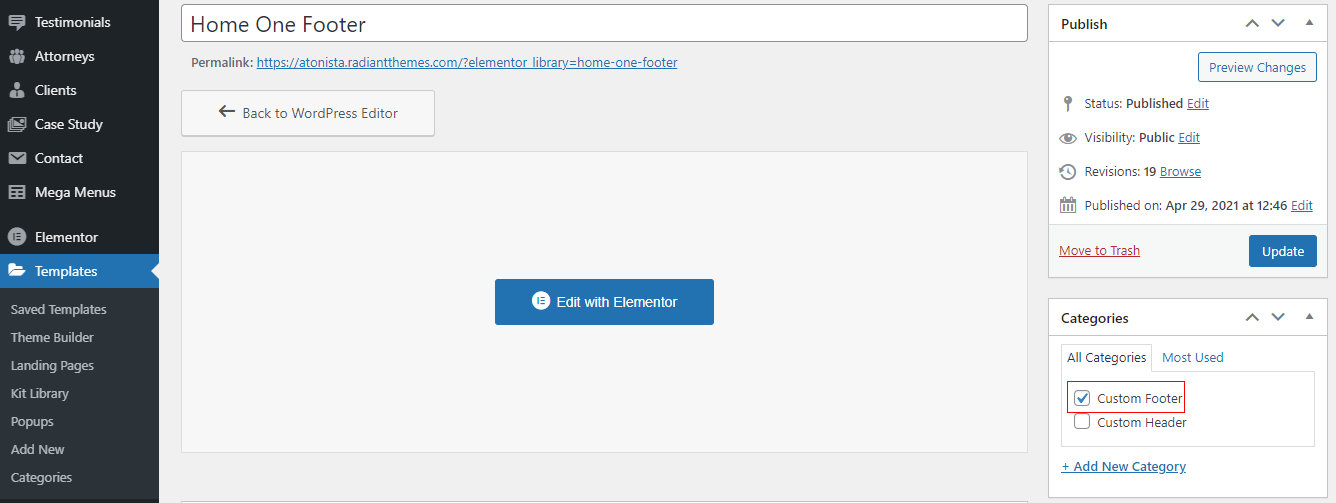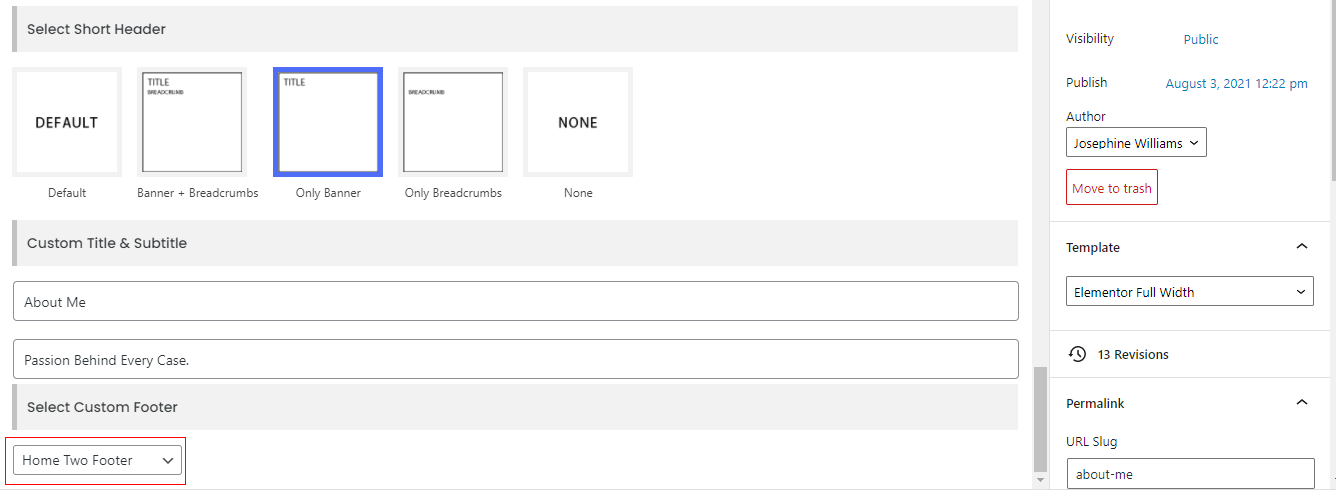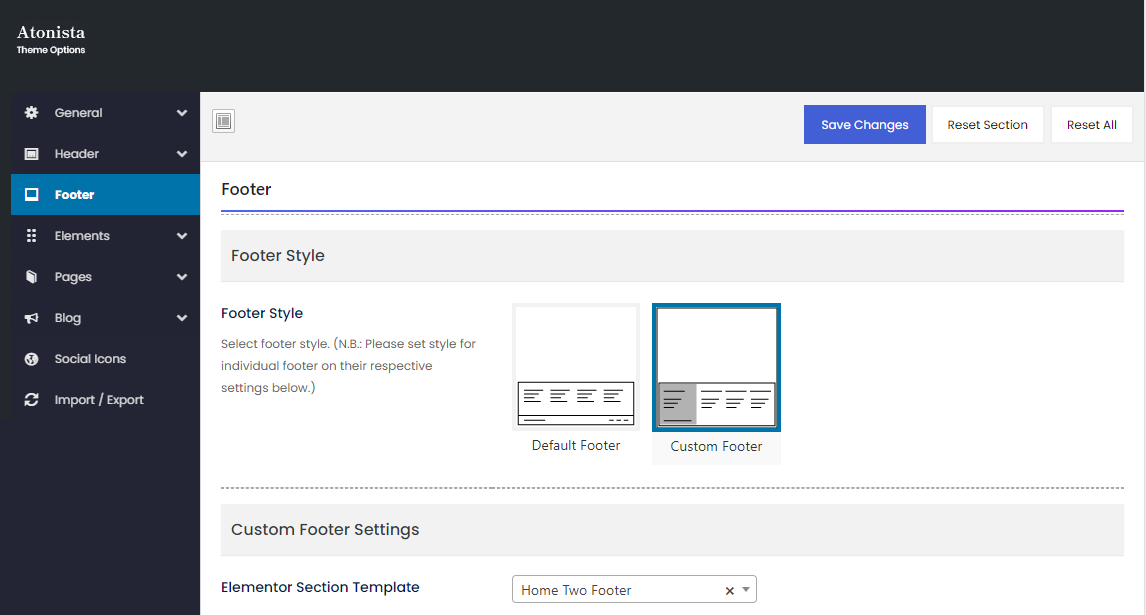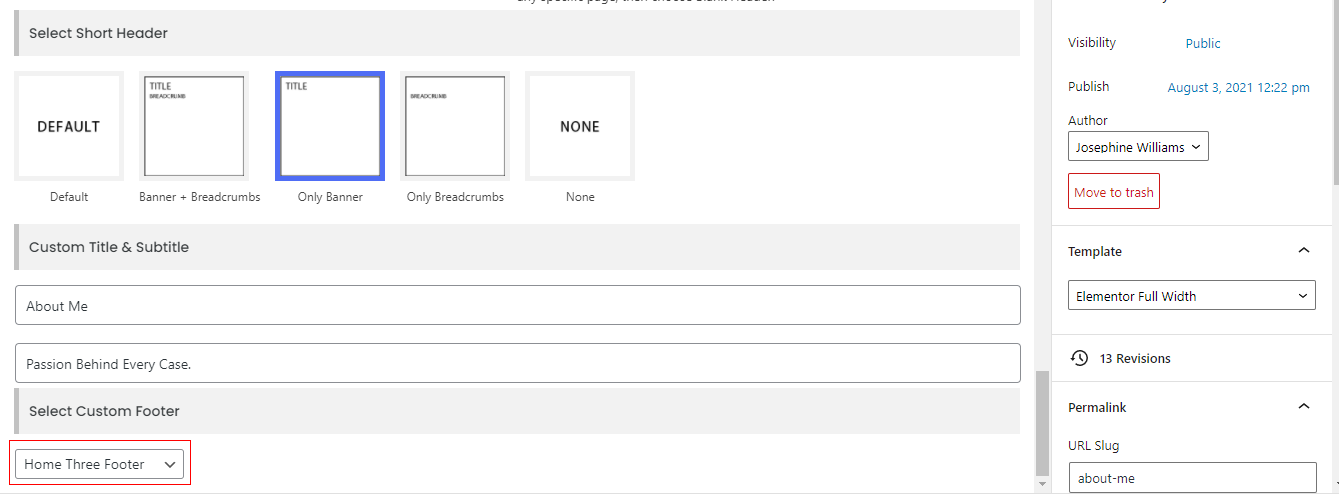1. Getting Started
We’re incredibly pleased and overwhelmed that you have chosen a theme from RadiantThemes for your website. We're sure you wont be disappointed! Here, we outline all types of the necessary information and provide you with all the essential details you require for using the theme. Our themes can only be used with WordPress and we presume that you already have WordPress installed and ready to go.
Essential Requirements and Recommended Settings--
Recommended Hosting
We recommend using a cPanel or Plesk based hosting from a renowned hosting service provider. Many low-cost providers provide their custom web-based panel which most of the time don’t have the required configuration to run websites smoothly.
We recommend using Siteground.com for any hosting related need. Order plain cPanel based hosting. Don’t order just WordPress Hosting from any hosting provider. WordPress hosting has lots of limitation and you might not be able to accomplish everything.
Ideally cPanel, Plesk driven control panels work seamlessly. Also, make sure that your provider uses the latest version of PHPMyAdmin. The older version of PHP and PHPMyAdmin might not support.
We can troubleshoot and help, if you use cPanel, Plesk, Webmin, web panel, zpanel types of control panel. Also, when you ask for our help, please consider sending control panel access. Only FTP access might not be sufficient always.
Recommended Hosting
To work with Atonista, please ensure that you are running WordPress 5.8 or higher, PHP 7.x or higher, and MySQL 5.6 or higher and wp_remote_get() function is unblocked in your server and if you're getting 'admin-ajax.php' connection error then make sure cURL is enabled on your Hosting..
Recommended PHP Configuration Limits
Various issues that you may run into are: white screen, your demo import fails, empty page content and other similar issues that are all related to low PHP configuration limits. The best way is to increase the PHP limits of the hosting account.
2) Upload Max. Filesize — 128M
3) Max. Post Size — 128M
4) Max. Execution Time — 300
5) PHP Max. Input Vars — 2000
6) PHP Max. Input Time 1000
2. Theme Installation and Demo Import
1) Download the Atonista theme by clicking on ‘All files & documentation’ of ‘Download’ button.
2) Login to your WordPress Admin Panel.
3) Click on Appearance -> Themes -> Add New.
4) Click on Upload Theme and choose the theme zip 'atonista.zip file (Which you already got by downloading the full package) and click on 'Install Now' button.

5) Activate the Atonista theme.
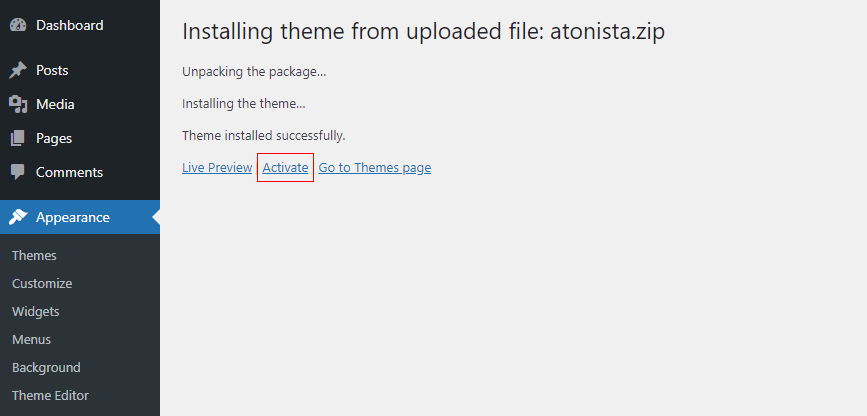
6) Setup will check your system setting and will show you if some of the values need adjustments. Click Start if all values are set properly

7) Install/Skip child theme. Please decide as per your requirement

8) Install all plugins to import demo designs smoothly.

9) Once all plugins are installed, demo import will start. it may take 15-20 managing-productsutes to fully import all pages. Time may vary depending on your server's processing speed. As there is a percent progress bar so you can always take idea about remaining time.

10) Set Permalinks to postname and you're done
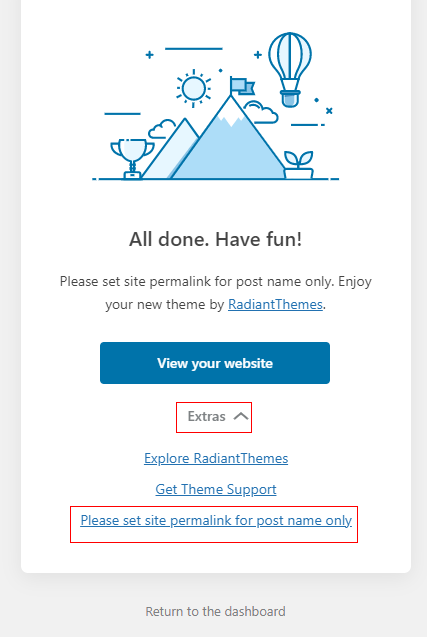
11) If you face any issue in seeing the site properly that maybe due to css. Please regerenate elementor css as shown below.
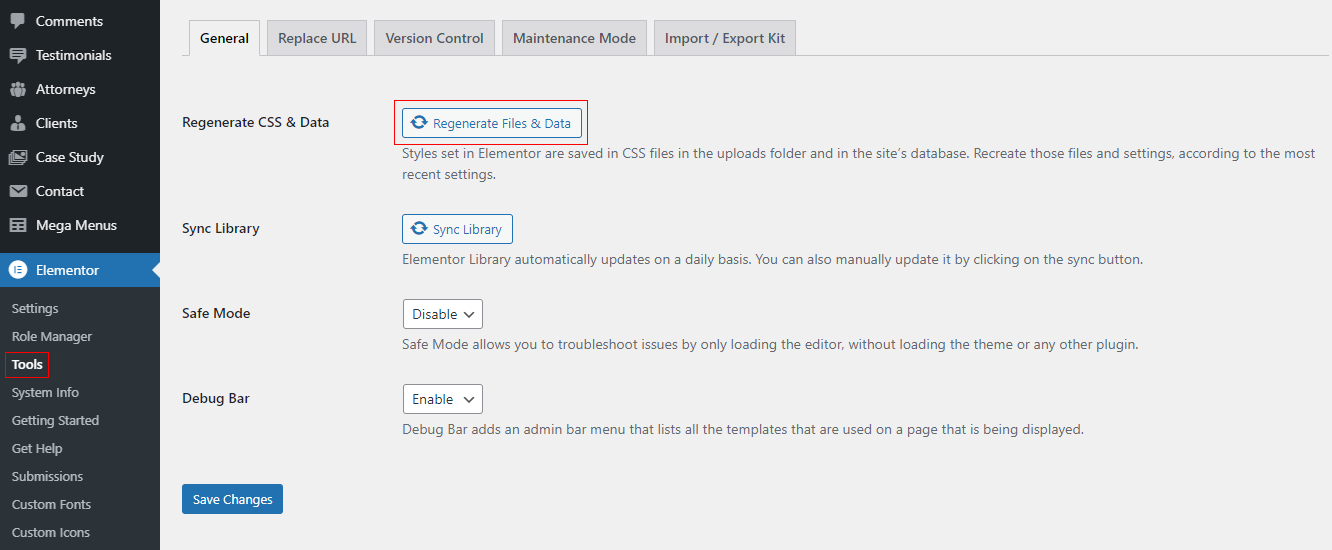
3. Header
Add/edit header
Header styles are coming through ‘Elementor’ and you can edit those styles from ‘Template > Saved Templates’.
Those templates which are assigned under 'Custom Header' are the templates of header. You can edit all those templates through ‘Elementor’.
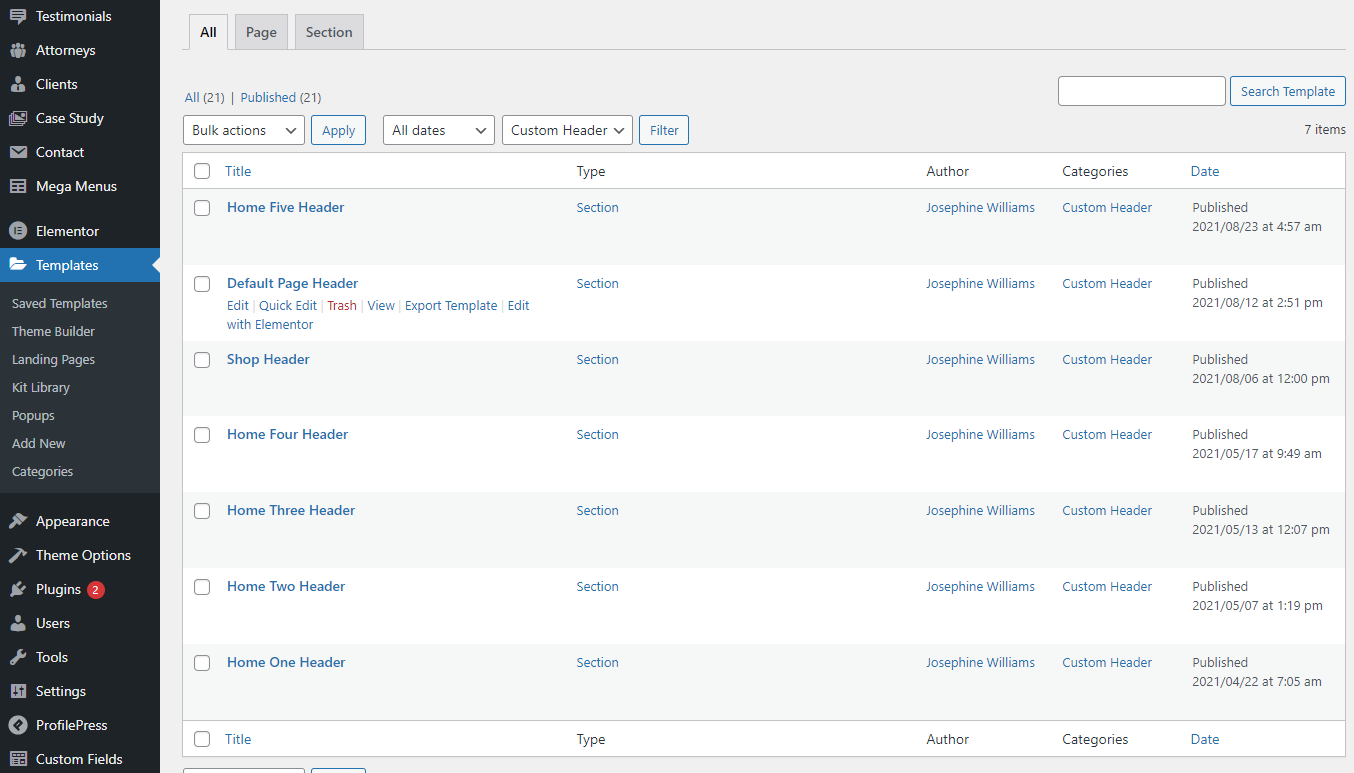
You can add new templates for header and sticky header from ‘Templates > Add New’ (Choose ‘Section’ as template type, name your template and click on the ‘CREATE TEMPLATE button).
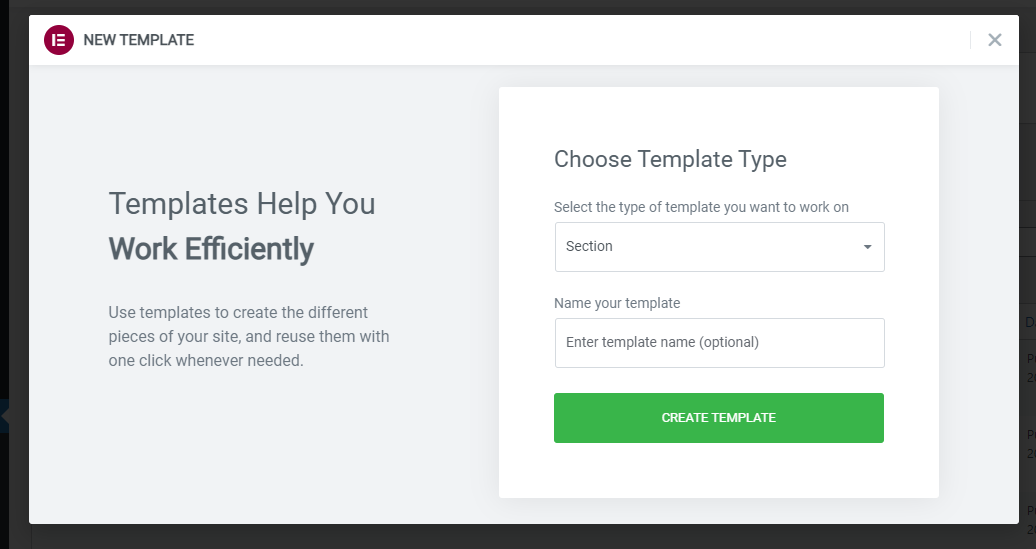
After creating the template, please choose the ‘Custom Header’ category for that template.
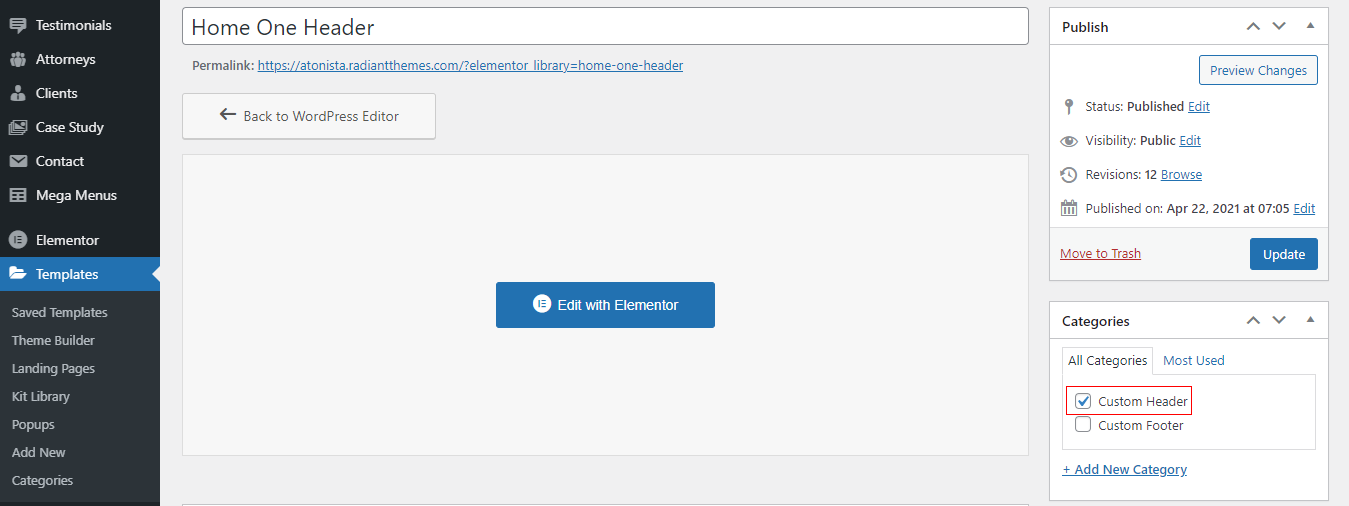
You can edit header by editing existing elements through ‘Elementor’. Also, you can add Logo, Menu, Cart Icon, Search or any other things on your new header by using our specific elements as per below:-
1) Logo:- You can add logo by using our ‘Custom Logo’ element. You can provide your logo image and height and width for the image from that element. You can change the logo for the sticky header from 'Floating Logo' field.
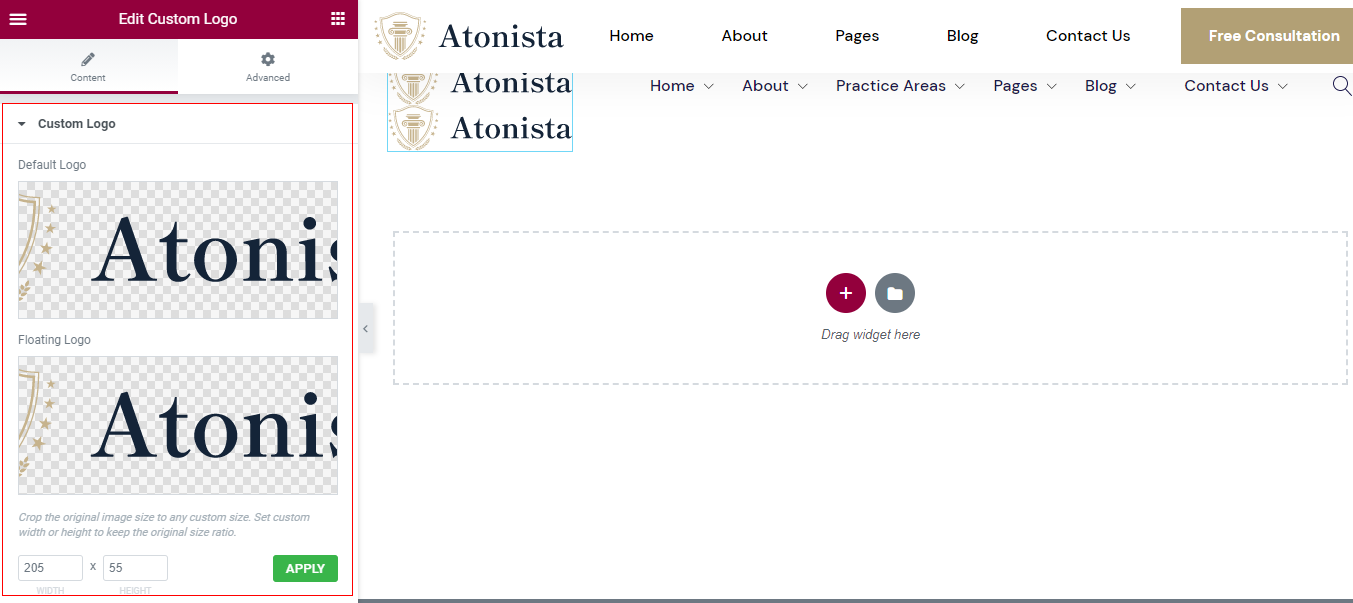
2) Menu and Search:- At first, create menu from ‘Appearance > Menus. After that, You can add that menu on header by using our ‘Header Custom Menu’ element. You need to choose your already created menu (Which you’ve created from ‘Appearance > Menus’) on ‘Select Menu’ field. You xcan add 'Search' too through this element.
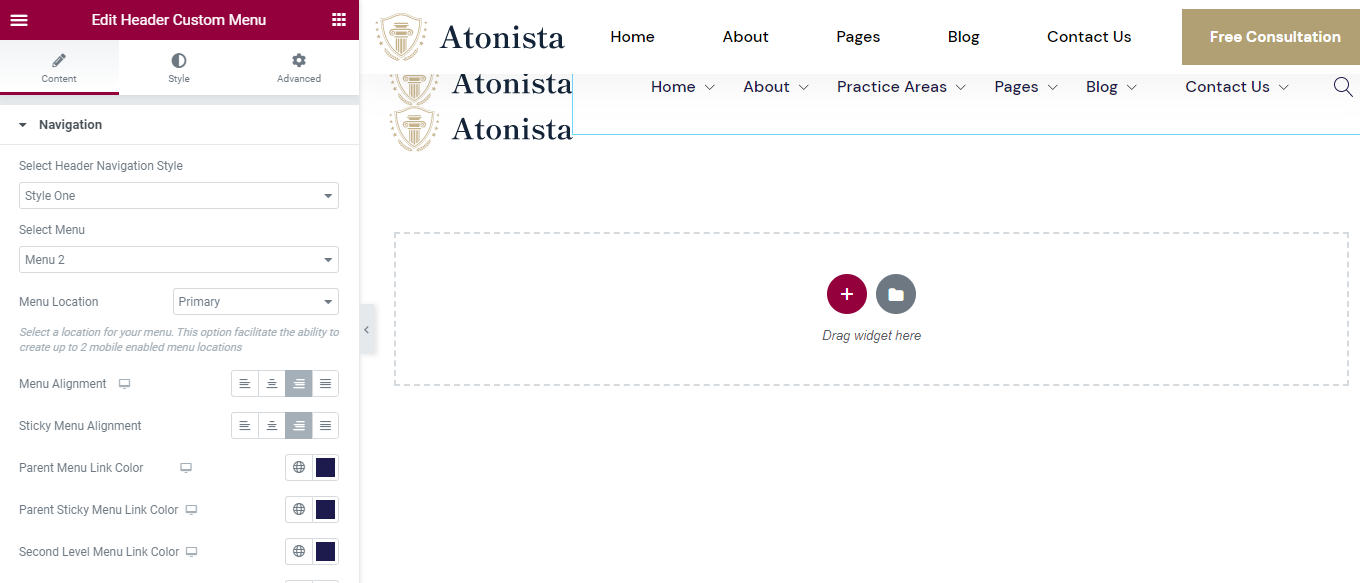
Setup header
If you want to run a common header for all pages, then choose any header style as per your choice from ‘Theme Options > Header > General > Select Header Style’.
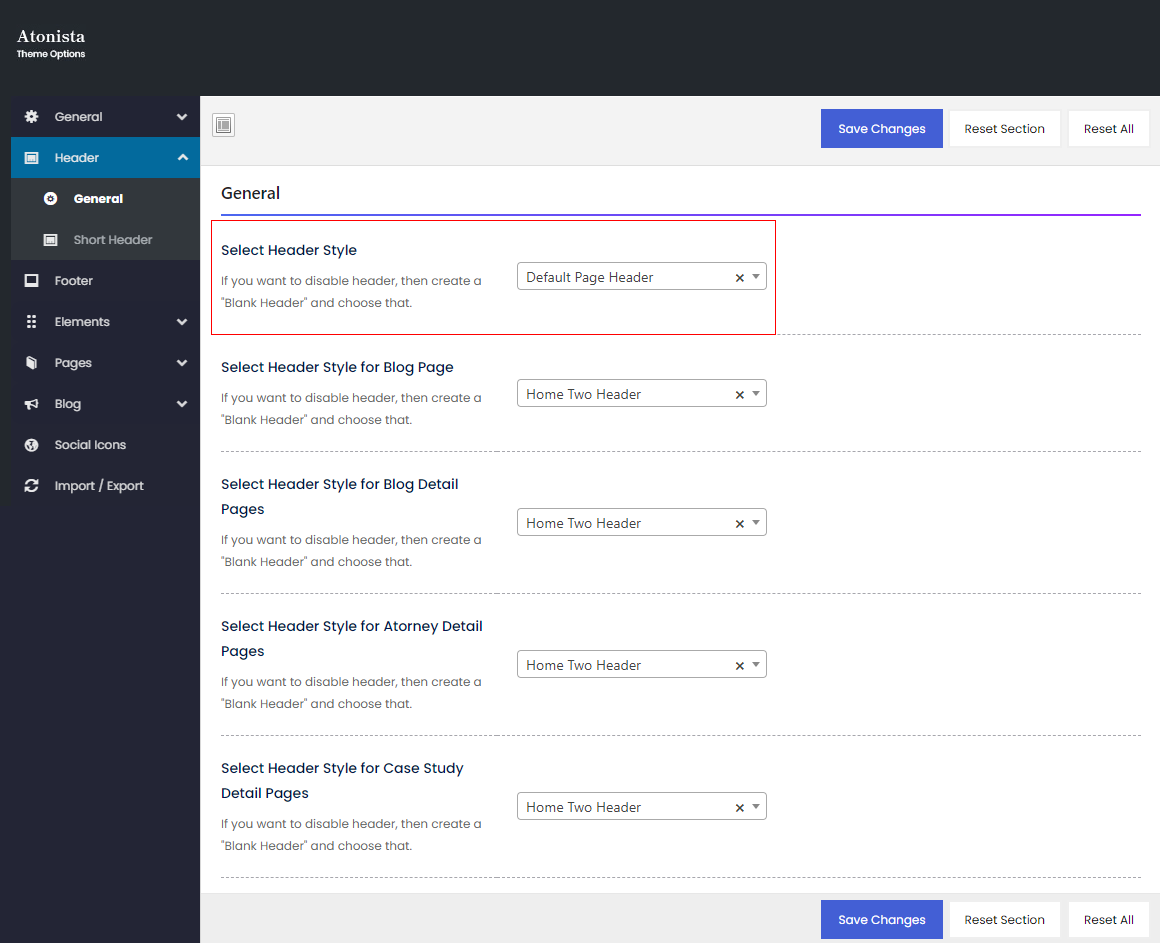
Different header on individual pages:- If you want a different header for any specific page, then choose any header style from that page from the ‘Select Custom Header’ section except the ‘Theme Default Header’. ‘Theme Default Header’ is the current header style of ‘Theme Options > Header > General > Select Header Style’ which is common for all pages.
For example, if you select 'Home One Header' from Theme Options > Header > General > Select Header Style’ and Theme Default Header’ from any specific page, then ‘Home One Header’ will run on that page. So, if you want a different header for any specific page, then select any header style except the ‘Theme Default Header’ from that page.
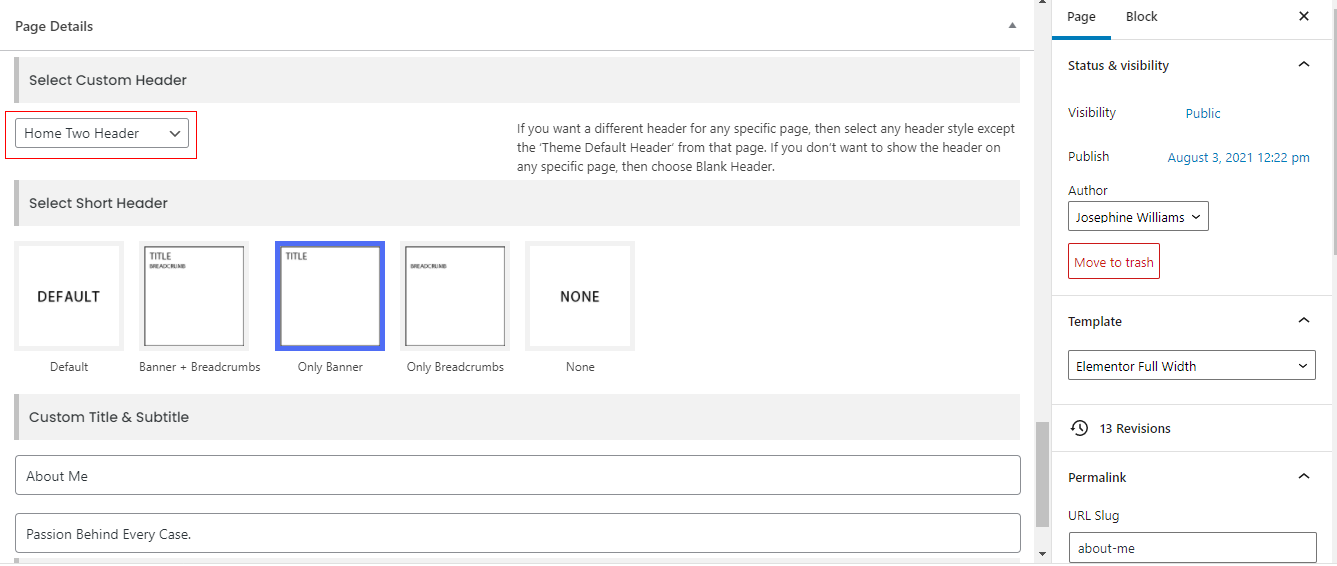
You can choose individual header for Blog and Blog detail pages, attorney and case study detail pages from ‘Theme Options > Header > General’.
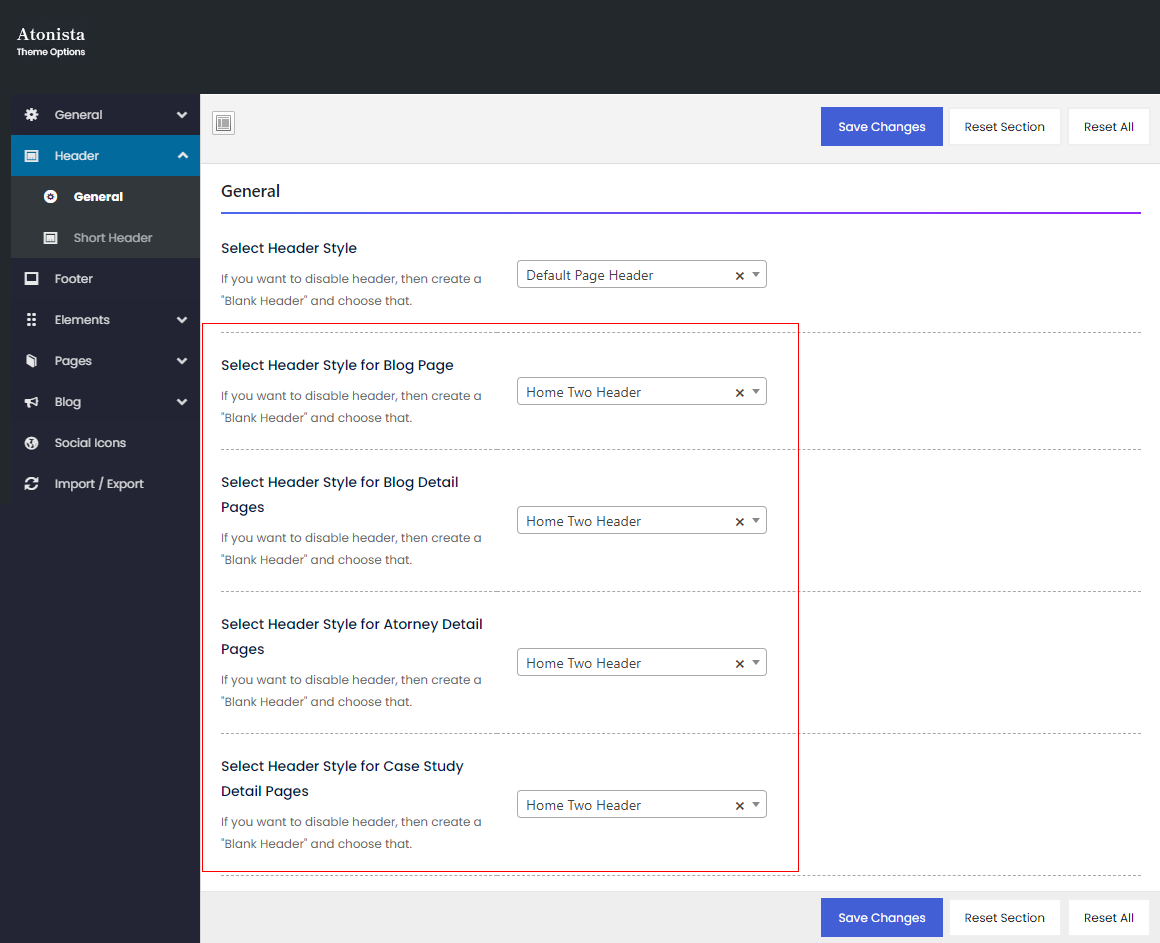
Change logo
You can change the logo from the specific header template you're using. For example, 'Home One Header' header is running on https://atonista.radiantthemes.com/ page, so you can change logo for that page from 'Templates > Saved Templates > Home One Header' template through elementor.

Add/Edit menu
You can add new menu item or can add new menu from 'Appearance > Menus'. If you've added a new menu and want to add that menu on any specific page, then you need to go to the header template of that page and assign that menu. For example, if you want to change menu on https://atonista.radiantthemes.com/ page, then you need to edit 'Templates > Saved Templates > Home One Header' template through elementor as 'Home One Header' header is running on that page and after editing that template, you need to assign menu on that header template.

5. Pages
You can add a new page from 'Pages > Add New'. You need to choose template of the page from 'Page Attributes' section on the right side of the screen.
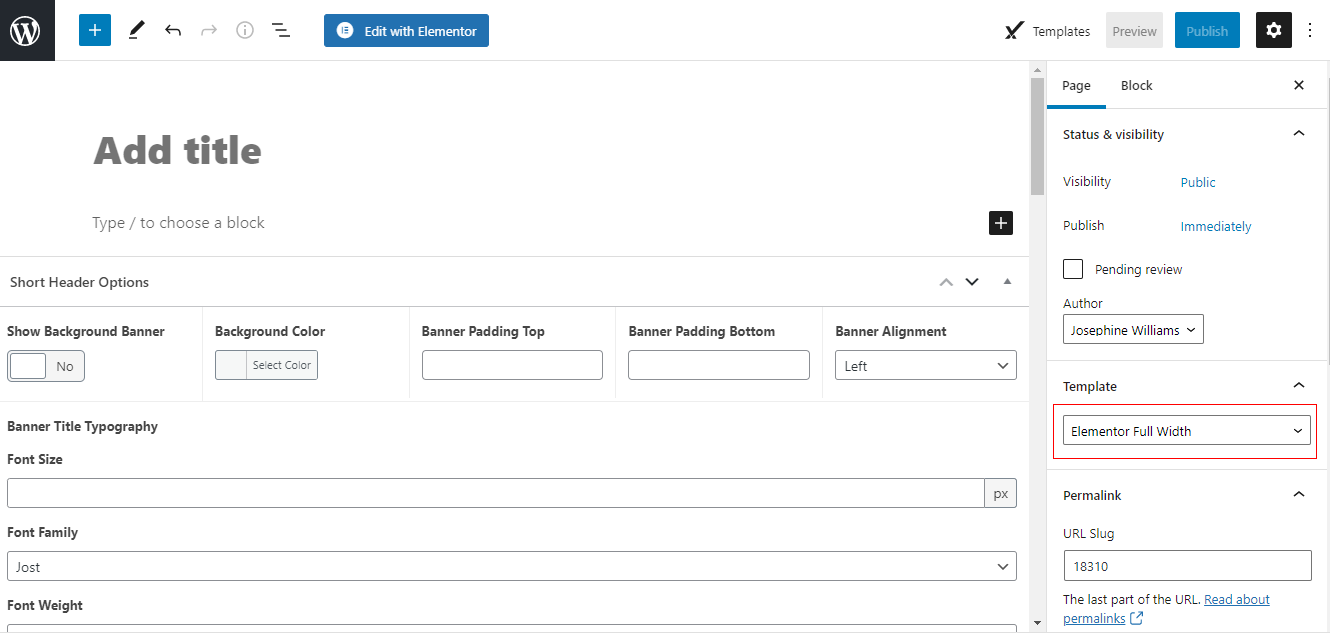
You need to choose 'Elementor Full Width' template for all the page.
6. Blog
Please go through the points given below to understand how to create a new blog post–
1) Login to WordPress admin panel.
2) Navigate to “Posts > Add New.
3) Provide a suitable title for your blog post.
4) Provide content.
5) As short contents for blog post element are coming from ‘Excerpt’, so you need to provide content on ‘Excerpt’ too.
6) Provide featured image.
7) From “Categories” box, you can put your blog post under a suitable category or create a new category for that.
8) Finally, click on “Publish” button to publish your blog post.

Edit Blog Sidebar
You can edit blog sidebar from 'Appearance > Widgets' and as editor is available from WordPress 5.8 version so you can edit existing widgets and can add new widgets through editor.
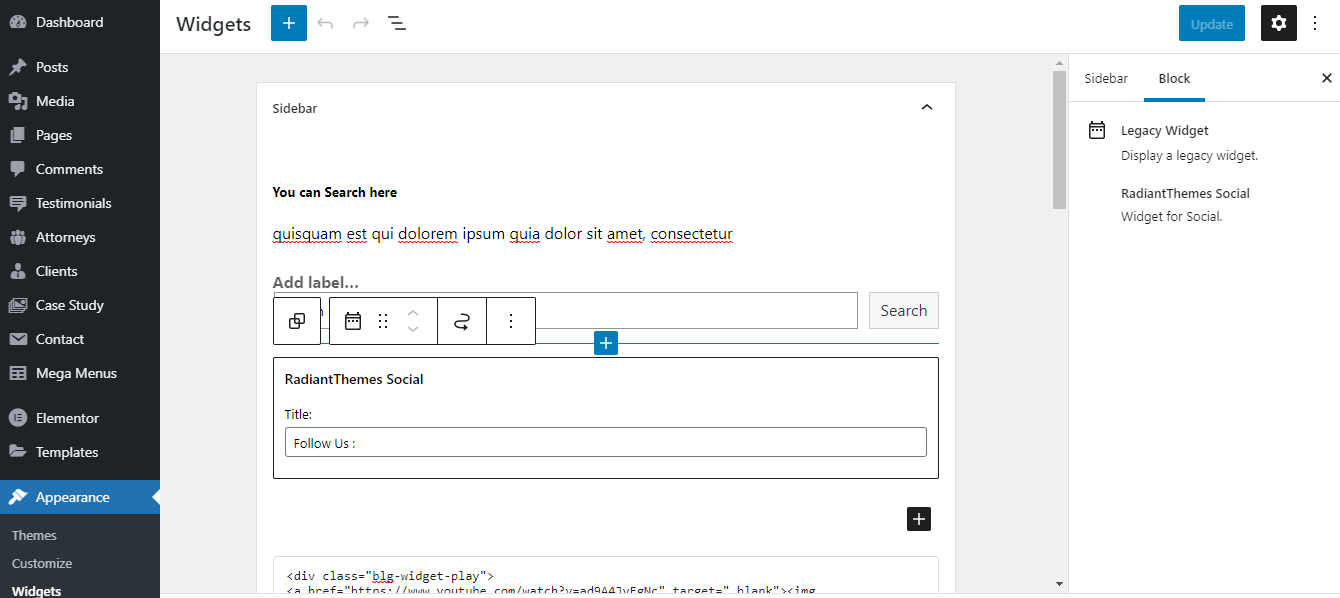
7. Attorneys
Please go through the points given below to understand how to create a new attorney item—
1) Login to WordPress admin panel.
2) Navigate to “Attorneys > Add New Attorneys”.
3) Provide a suitable title for your attorneys item.
4) Provide content.
5) Provide person information from 'Person Information' box
6) Provide Attorneys Member Image.
7) From “Professions” box, you can put your attorney under a suitable profession or create a new profession for that.
8) Finally, click on “Publish” button to publish your team item.
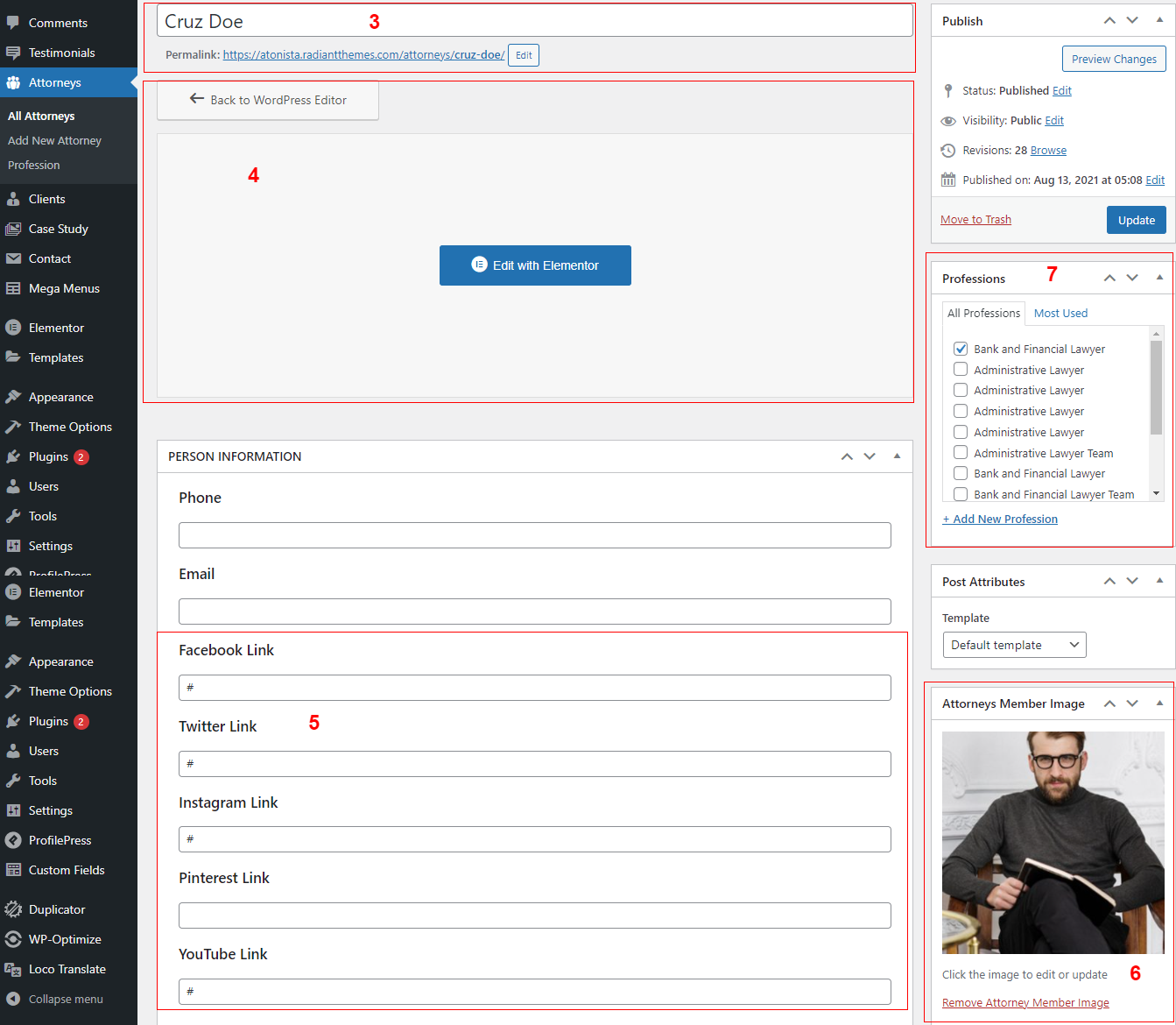
8. Case Studies
Please go through the points given below to understand how to create a new case study post—
1) Login to WordPress admin panel.
2) Navigate to “Case Studies > Add New Case Study".
3) Provide a case Study title for your Case Study item.
4) Provide content.
5) Provide Case Study Image.
6) From "Case Study Categories” box, you can put your case study item under a suitable category or create a new category for that.
7) Finally, click on Publish” button to publish your case study item.
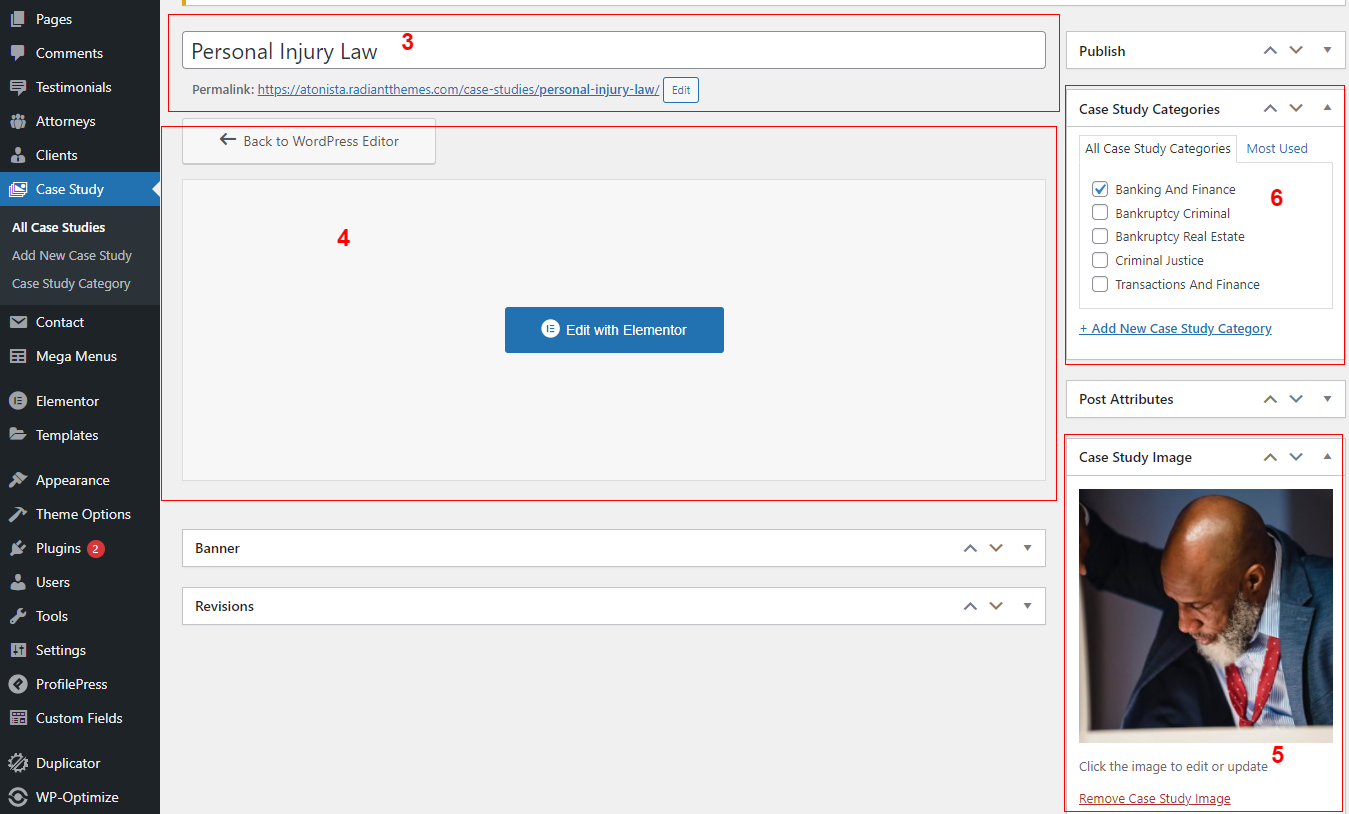
9. Clients
Please go through the points given below to understand how to create a new client item—
1) Login to WordPress admin panel.
2) Navigate to “Clients > Add New Client”.
3) Provide a suitable title for your client item.
4) Provide client category.
5) Provide client image on client cover image section.
6) Finally, click on “Publish” button to publish your client item.
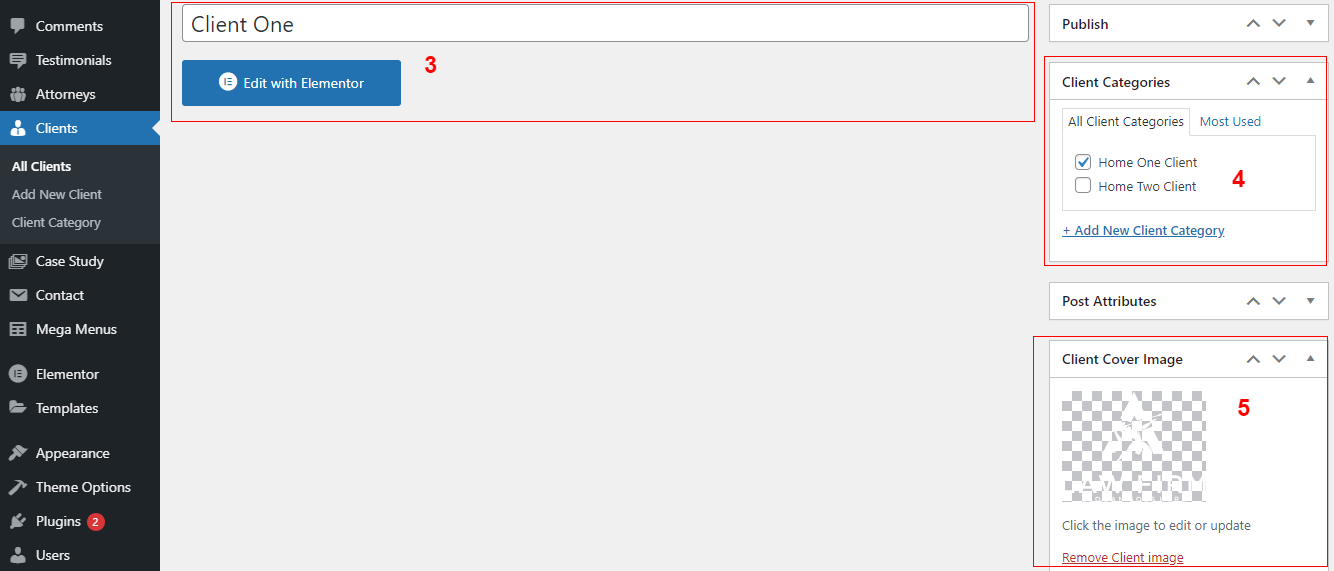
10. Testimonial
Please go through the points given below to understand how to create a new testimonial item—
1) Login to WordPress admin panel.
2) Navigate to “Testimonials > Add New Testimonial”
3) Provide a suitable title for your testimonial item.
4) Provide content.
5) Provide 'Designation'.
6) Provide 'Rating' if you needed.
7) Provide testimonial category.
8) Provide testimonial image.
9) Finally, click on Publish” button to publish your testimonial item.
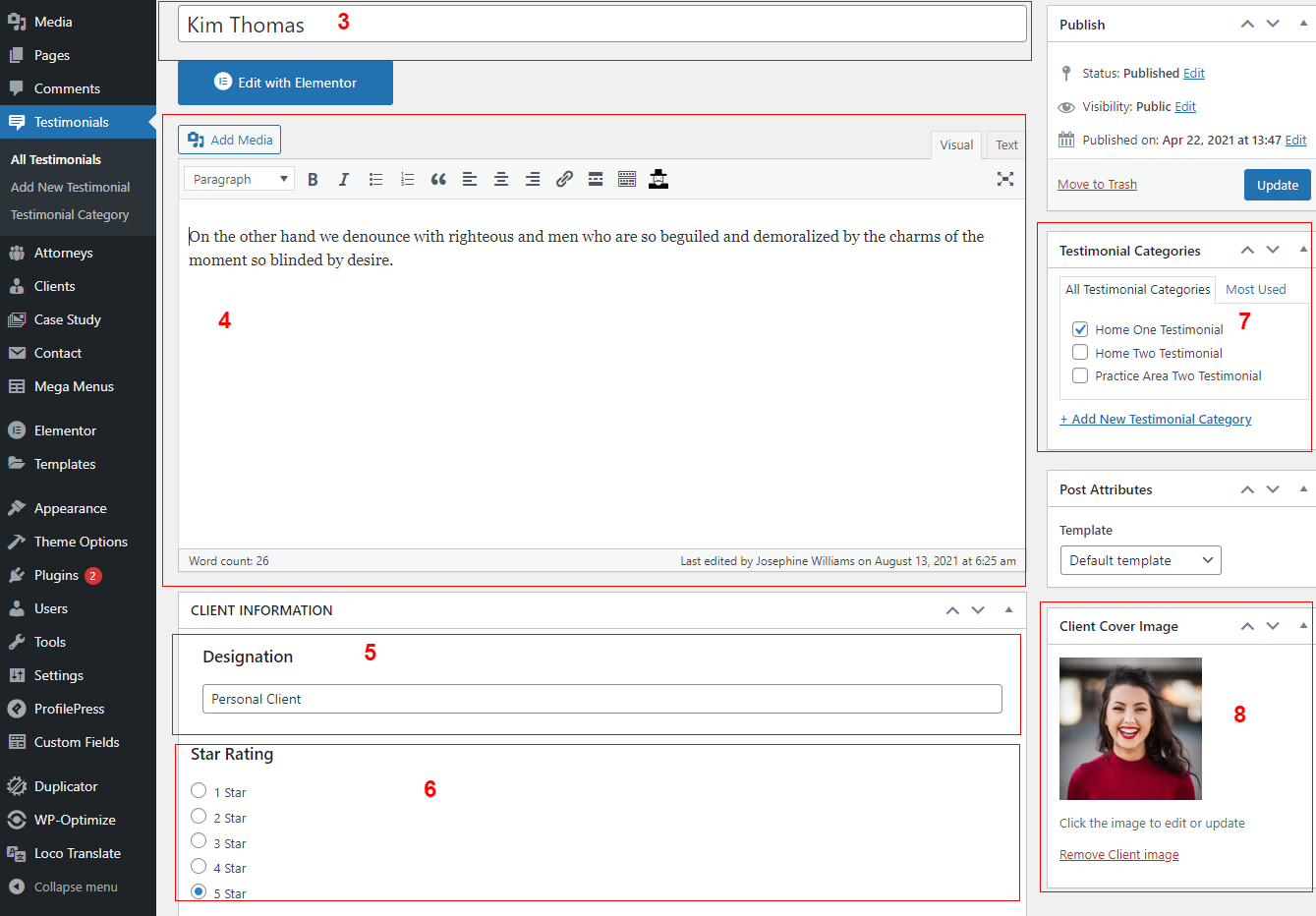
11. Contact Form 7
Contact form 7 is used to create ‘easy to handle’ and ‘easy to customize’ forms. This theme has seven pre-built forms. To get all forms, ‘Contact Form 7’ plugin must be installed and activated. You can add/edit/delete the contact form by following this documentation— https://contactform7.com/getting-started-with-contact-form-7/
If you have imported our demo designs then you'll get all contact forms along with demo import. You only need to configure them to suit your purpose. We’ve created contact forms through ‘Contact Form 7’. Once you’ll import the demo data, you’ll find all the forms on ‘Contact > Contact Forms’.
You need to provide all the information for every contact form, so that you can get the details upon customers fill up any form. You can put information(Information may vary as per the form) on the ‘Mail’ tab as per below screenshot:-
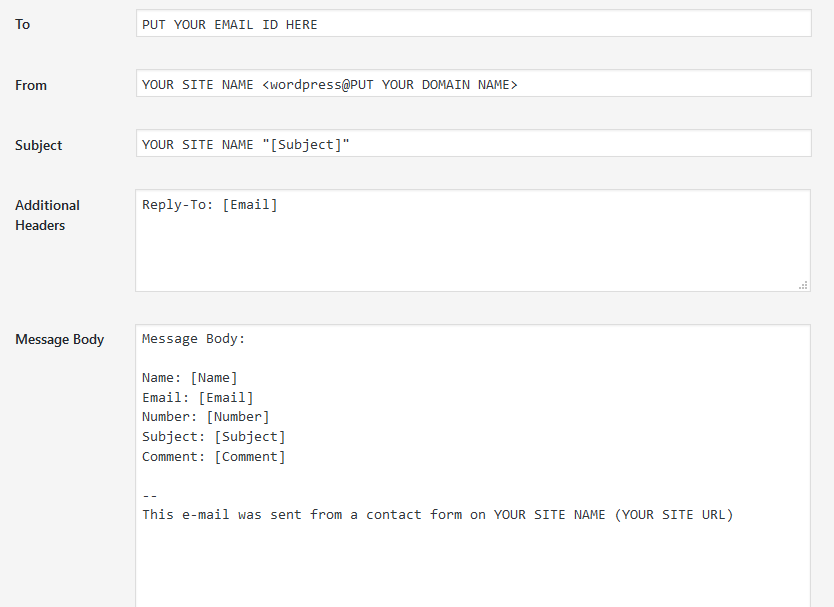
12. Theme update
Download the latest package of the theme, unpack the files, and upload the theme on the server.
You need to upload the theme on your server by following these steps–
1) Login to your Hosting
2) Go to public_html > wp-content > themes
3) Upload the updated zip file of your theme
4) Delete the theme of the present version
5) unzip the updated version of the theme
6) After unzip, you may delete the theme zip
13. Plugin update
You can update plugins by following below steps–
1) Login to your wp-admin
2) Go to Plugins > Installed Plugins
3) Now, delete those plugins which you want to update.
4) Now, go to Appearance > Radiantthemes Install Plugins’ and re-install and re-activate those plugins again and you'll get the updated plugins.
14. Change slug of custom post type
You can change the slug of existing custom post types from 'Theme Options > General > Custom Slug'.
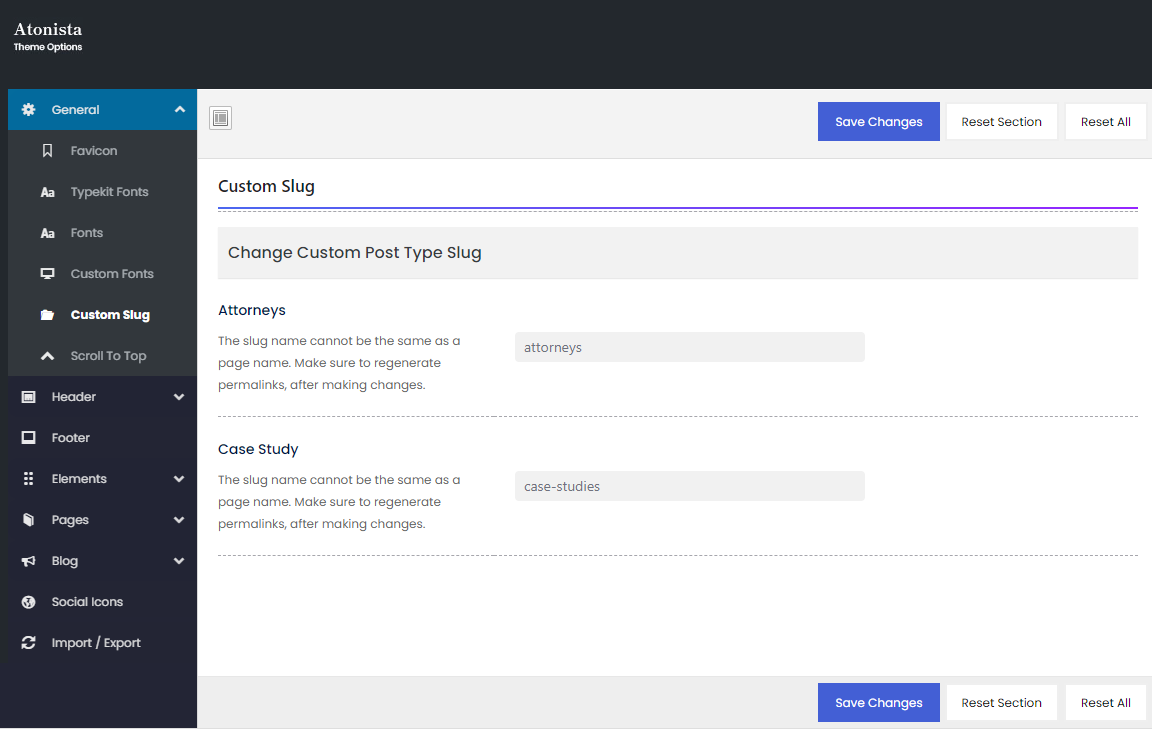
After changing the slug, please set the permalink once from 'Settings > Permalinks'.
15. Translation
Use Poedit software
For individuals who desire translation using files included in the theme, we suggest using the .mo/.po files. These files work in ‘buddies’ or pairs, so for every language, you must have 2 files with the same name but with a different extension name altogether. For example, if you wish to translate into the French language, your files would be fr_FR.mo and fr_FR.po
To make edits on these files, you have to use Poedit which is an “easy to use” software. You only need to upload our provided .pot file into Poedit, then edit relevant text values, save the file and upload them into the language folder that is included or provided in the theme.
Use Loco Translate
You can use https://wordpress.org/plugins/loco-translate/ plugin for translate too.
